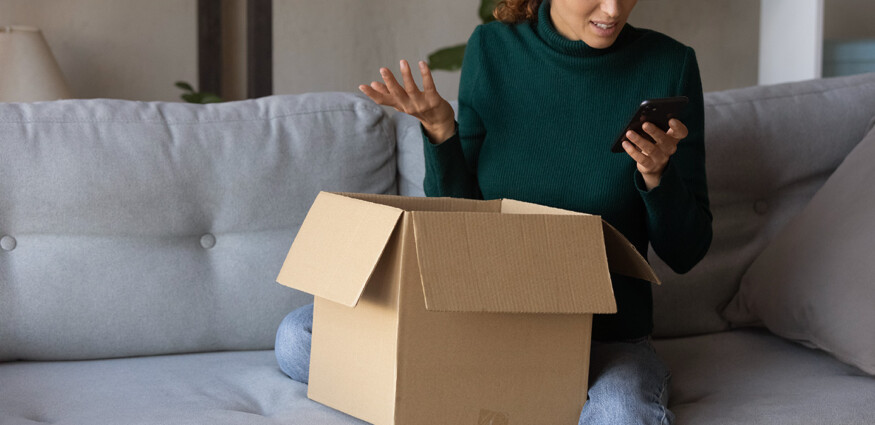Most people know this situation: The package arrives, and the bicycle pump doesn’t fit on the tyre valve. Or the T-shirt looks less lovely than in the photo. Send it back? The package is too bulky, and you need more time. And it may even cost money.
Online merchants need to offer the best possible returns solution to retain customers. Satisfied customers are more likely to return for more online shopping, which is a real competitive advantage, especially in cross-border trade.
Five tips for lowering the return rate
The Returns Management Research Group at the University of Bamberg investigated the impact of the pandemic on return behaviour. This study estimated the number of returned purchases in German e-commerce to be at least 315 million in 2020. How can online retailers minimise the number of returns?
1. Optimize product texts and photos
Success Factor: Shipping, a study conducted by the ibi Research Institute at the University of Regensburg, named mismatched items the most common reason for returns. Why?
It all starts with meaningful product photos and texts. What good is it to a bicycle store customer if the pump he ordered is described as “universal” but doesn’t fit the valves on his bike tyres? Online shop operators should ensure that the information they provide is as detailed and accurate as possible. This is especially important for clothing, where exact measurements are required.
2. Simplify return shipments
The ibi study mentioned above showed that uncomplicated returns processing (95%) and free shipping (83%) are the most critical factors for customers when purchasing.
One advantage is that the package can be easily reclosed instead of having to be torn apart when it is opened. An ideal solution is a self-adhesive return label that can be scanned when the package is dropped off (for example, at the post office or parcel station). Customers should receive a PDF label by email so that they can print it out to make the return shipment as convenient as possible.
3. Never break the chain of information!
Let’s assume the customer goes to the post office, mail-order store or parcel station and sends off the return package. And they have been waiting to hear about their return shipment for days or weeks. They are still determining whether their money will be refunded or if they will have to wait until the retailer receives the merchandise.
It’s always better to send real-time information by email and tracking on the retailer’s website or via push message to the customer’s smartphone. Many retailers fail to provide details in real-time, especially for returns. But this information is important because it helps ensure customer satisfaction—even if they have to wait a little longer.
Online retailers should set up their systems to receive a message about the return shipment as soon as it’s scanned by the parcel service or at the post office. This way, the customer can be informed immediately that the refund is being processed. It is also helpful to send real-time information to the customer about the return status and their account balance.
4. Take country-specific preferences into account
Customers in the UK prefer doorstep delivery and pick-up. In other European countries, pick-up or drop-off options like Amazon locker stations, which are gaining popularity in Germany, are more acceptable. Retailers should choose a logistics company that meets customer preferences.
5. Lower costs despite returns
The legal situation in Europe is clear: customers can return purchased items. But do they also want to bear the costs? A survey on shipping and returns management in online retailing conducted by the Erfurt Chamber of Industry and Commerce found that around 44% of all customers expect free return shipments.
Nearly 40% of online retailers need to learn the costs of their returns. According to an ibi Institute study, Making the Most of Returns Management in Online Retail, 80% do not record returns based on payment method. Retailers who evaluate this factor have a better overview of their costs.
Suggestion for cross-border traders: Once a return shipment has been scanned, packages can be collected for the destination country. This lowers costs, and how quickly goods are returned to the merchant does not play such an important role.
Conclusion
Merchants should evaluate whether a customer’s repeat purchases outweigh the costs incurred from return shipments. An online shop’s reputation, brand image, and anticipated ratings should all be considered. The customer journey should also be set up for optimal return processing, which should be free of charge. Finally, optimised logistics reduce the costs of return shipments.







